Trumpeter | 02262: 1/32 Republic P-47 Thunderbolt
Reviewed by Chris Sherland

A Brief History of the P-47 Thunderbolt
Republic's big heavy-hitting P-47 Thunderbolt holds the distinction of being the most mass produced single-seat fighter aircraft in US history. From humble beginnings it was an evolutionary path rather than design innovation that brought the Thunderbolt to the light of day. Based on tried and true standards set by Seversky in the late 1930s, the P-47 shared design and construction elements with the Seversky P-35 and Republic P-43 Lancer.

photo: Airpower Museum via G. Lewi
Tying these successful design elements to the massive 2000hp Pratt and Whitney R2800 engine gave the P-47 its sheer size, without doubt the heaviest single engine, single seat USAAF fighter of WWII. However as its size grew so did the evidence of the Seversky design genius. The rugged production practices pioneered by Seversky and carried forward to Republic Aviation translated this size into unprecedented survivability, and the proven elliptical wing design gave the Thunderbolt unparalleled maneuverability for its size as well as profoundly docile handling at extreme altitudes.
All this translated into a fighter that brought the right combination of performance and durability to every theater it deployed to. While not as downright sexy as a Mustang or Spitfire, the P-47 earned its prestige the hard way, through combat. The folks who understand the importance of the role that the Thunderbolt played in the air war of WWII are the types that have taken the time to look deeper than a pretty profile; the P-47 was a workhorse. There was an old saying amongst ETO fighter pilots that said "If you want to get girls; get your picture taken in front of a Mustang, but if you want to get home, drive a Thunderbolt." Indeed the pilots who flew the P-47 were endeared by a bond between man and machine that grew more and more personal with every bullet the Thunderbolt absorbed.
And while the glory goes to the prettier fighters it should be noted that the highest scoring fighter group (air to air victories) in the ETO flew the Thunderbolt exclusively, in fact when asked to turn in their P-47s for the newer P-51 Mustangs, the CO of the 56th FG (then Col. David Shilling) flatly but politely refused, preferring to stay with what the group knew best, and perhaps pay some homage to the fighter that got them home time and again.
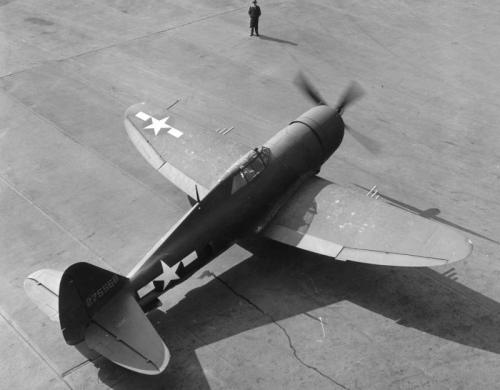
Photo: Airpower Museum via G. Lewi
Famine to Feast?
The first 1/32 release of the P-47 was done in Revell's large scale heyday in the late 1960s. Both Razorback and Bubbletop versions were released, and while these were accurate and full featured for their day, they had grown long in the tooth by the mid 1980s as technology and design standards advanced. Jerry Rutman stepped in and offered first detail sets, then full resin kits in which the Revell's shortcomings had been fixed. However full resin kits are not for the passively dedicated modeler, and Rutman's Thunderbolts never made an impact on the mainstream market.
With the P-47 consistently riding high in the "1/32 most wanted" polls on nearly every webzine online, someone was bound to step up. Early in 2006 a relatively unknown company out of France, Redux, announced a 1/32 Razorback kit. I was lucky enough to receive a test shot of this model and was convinced that the era of the 1/32 Thunderbolt was about to blossom. This kit went through some teething pains and as of this review still has not seen the production line.
Trumpeter announced late in 2006 that they would be releasing an entire line of P-47s from the Razorback, through the late Bubbletops, including the N model! This might have been the news that slowed the Redux effort down, but it again seemed as though the modern large scale Jug was going to happen…finally.
Hasegawa quietly snagged the market out from under Trumpeter with their release of the P-47D Bubbletop during the Summer of 2007. Now Trumpeter fires back with a very full featured offering for the D model razorback.
Seems the fate of that closet full of Revell Thunderbolts could be doomed...if it weren't for the fact that they were each only about $15 to $20 USD. This Trumpeter kit lists for $125 USD.
The Kit
488 pieces on 17 sprues suggests that this is not a weekend throw together affair. In fact this is the most detailed and full-featured Thunderbolt kit in any scale yet combining the best features and engineering from the Tamiya 1/48 P-47 series with new detail that has up until now not been featured by a mainstream injection-molded kit. Full sprue shots can be found on the Trumpeter website.
Trumpeter's surface detail has long been a source of different opinions; many feel their treatment of panel lines and specifically their inclusion of rivet detail is heavy handed. However in their defense this (and other unloved practices like the pin-hinge moveable surface system) have been reduced as new kits were released. The Razorback kit shows the most restrained surface detail yet from Trumpeter in this scale...however it still may be too much for some. Still present also are the rubber tires.
The engine is beautiful. Finally a very accurate and well appointed model of the R2800 is provided in a mainstream kit, with absolutely nothing held back. With 22 main pieces and over 72 additional detail parts this engine lacks only wiring to be a stunning piece out of the box. I would love to go on about this as it is truly a gem, but there is a lot more to report. Trust me, the engine is fantastic.
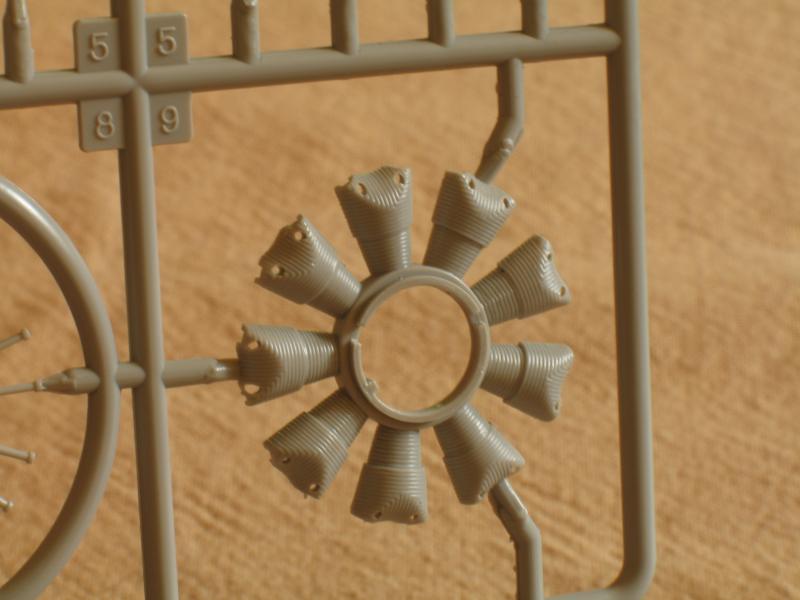
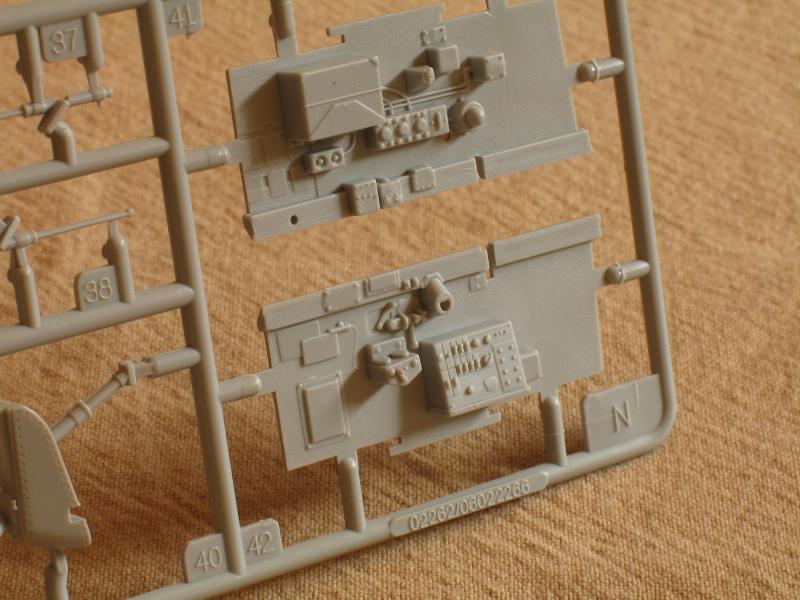

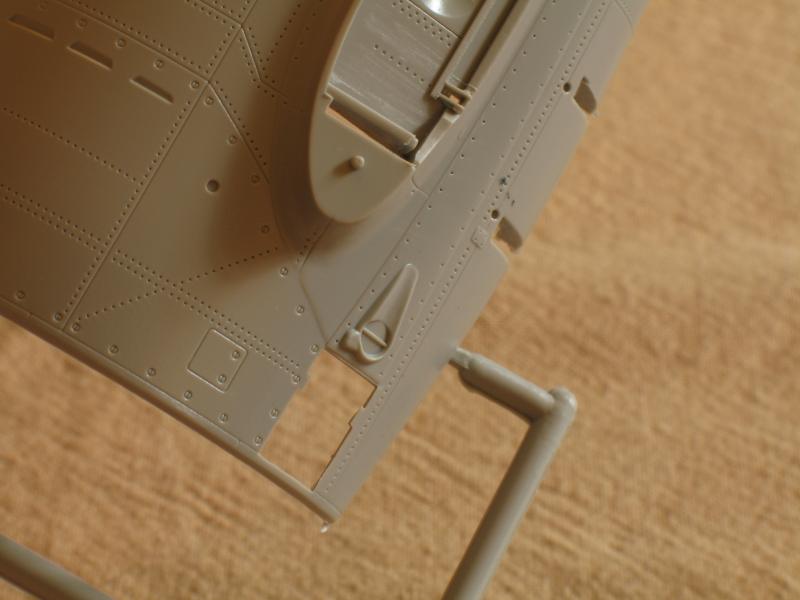
4 propellers are provided for every version of Thunderbolt imaginable, but the Razorback used only two; the asymmetrical Curtiss (thin blade) and the Hamilton standard.
A strange choice was made to model the Thunderbolt's turbo supercharger and related ducting work. While virtually ALL of this structure and detail will be lost when the fuselage sides are sealed up, they do invite the brave to perform what could be a jaw dropping cutaway with very little effort. Without many rivals, the Thunderbolt's intricate and elaborate ducting and venting system is a lesson in aero-engine development. This system alone could be assembled and finished as a special interest piece and would surely be intriguing.
Another set of parts that will be hidden is the firewall and engine mount assembly. Very nicely detailed this area is complex and again could be revealed with relative ease by removing a few forward fuselage panels. Perhaps Trumpeter planned a clear fuselage part but did not follow through...? If these "hidden" details do nothing at all, they smooth the path to super detailing by providing structure and detail that would be exceptionally hard to tackle as a scratch-building project. I imagine we'll be seeing many builds of this kit ripped open in beautiful dioramas that convey the complexity of the Thunderbolt's innards.
An RDF direction finding loop antenna is provided in two different types. While not prevalent on Thunderbolts, this is a nice addition. Strangely both decal options provided are for aircraft that did not feature the spine-mounted antenna.
The cockpit detail is very good. Indeed with the exception of the trim wheel area and the throttle quadrant all the detail in the cockpit is vastly ahead of the new Hasegawa kit. The rudder pedals are inaccurate to some degree, but a nice photo-etched harness is included, as well as a high quality film and clear (sandwich) part for the instruments. While not needed for any Razorback version, the late war K-14 gunsight is provided along with the more appropriate early war sight.
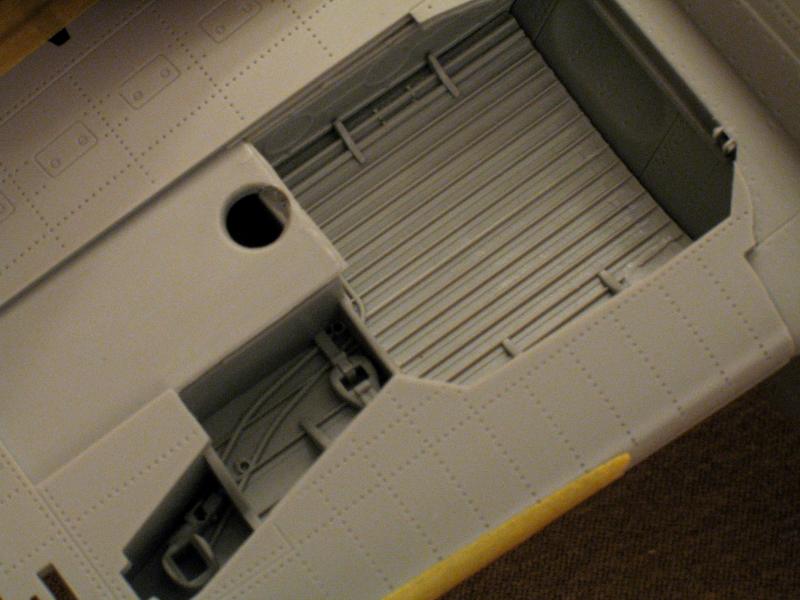
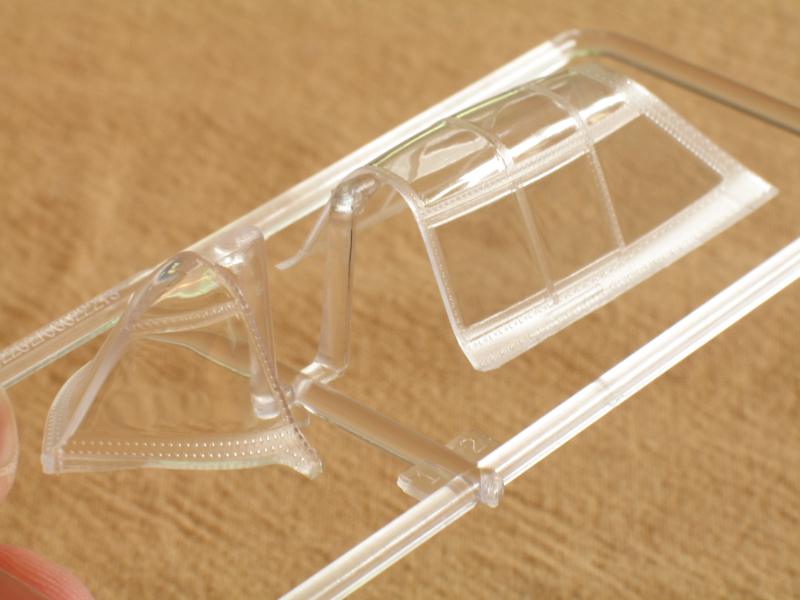
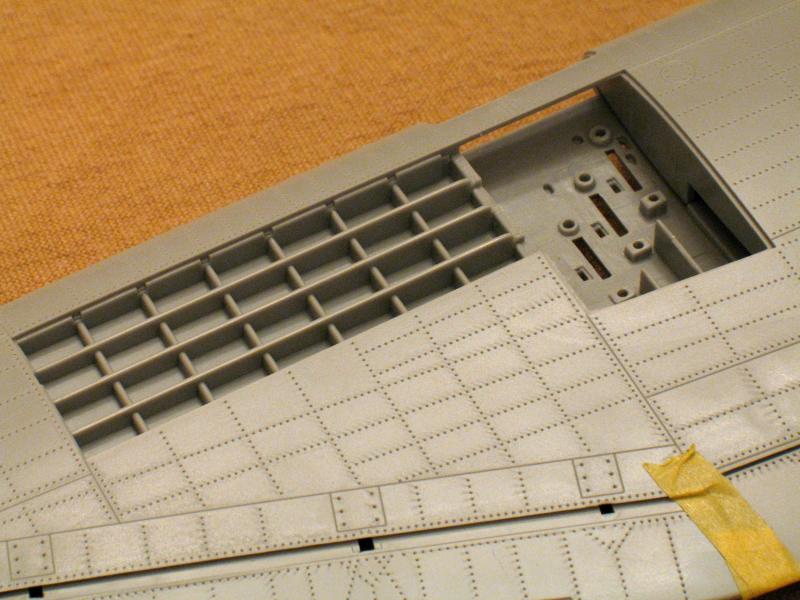

The wings are engineered to showcase open ammo and gun bays on both sides. The fifty caliber guns are well detailed (with minor fit issues) and rubber ammo belts are provided for each gunbay slot. The feed chutes are very nicely molded with ammo sculpted in. This may be a barrier to modeling the ammo bays empty. Both raw barrels and sleeves are provided as options for the guns. Both barrel types also provide hollow ends through slide molding techniques.
All flying surfaces including rudder, ailerons, elevators and flaps are posable. This is a very nice feature, and it reflects a well thought out kit overall.
The gear bays are adequate but not special, some detail is fairly bland here and inaccurate. However they do feature a separate piece for the main gear leg actuating cylinder which is a nice addition.
The main landing gear is modeled well, but again not special in any way. The scissor links are bland and thick, and the main gear legs are a single piece with molded-in detail. Two hub types are provided, flat and spoked. Again rubber tires are featured.
Three sets of wing tanks are included covering all the tanks that the P-47 carried, as well as the centerline 108 gal "pancake" tank. Pairs of 250lb and 500lb bombs are also included along with the late war triple tube bazooka rocket launchers (rarely seen on Razorbacks). In a clear give away of things to come, zero-length rockets and launchers are included as well (only seen on late D-30, D-40 and N models).
The clear parts are well done, thin and free of distortion. The now-classic textured areas for canopy rails I find to be quite a nice touch making masking and paint adhesion a breeze. Landing lights, instrument panels (two variations) gunsights and armored glass are all included. If I may indulge you in a small but thrilling detail, Trumpeter has absolutely nailed the elusive "squeeze" that the Razorback canopy features as it tapers to the windscreen. This is a detail that is lost on almost every kit, profile, and painting of the Razorback I have ever seen and if left alone usually results in the windscreen being too wide at the rear. This detail, while small, is also indicative of a thorough pre-production process.
The instructions are clear and concise, and the painting guide is in color.
Details
Some things in this kit are worth a closer look...
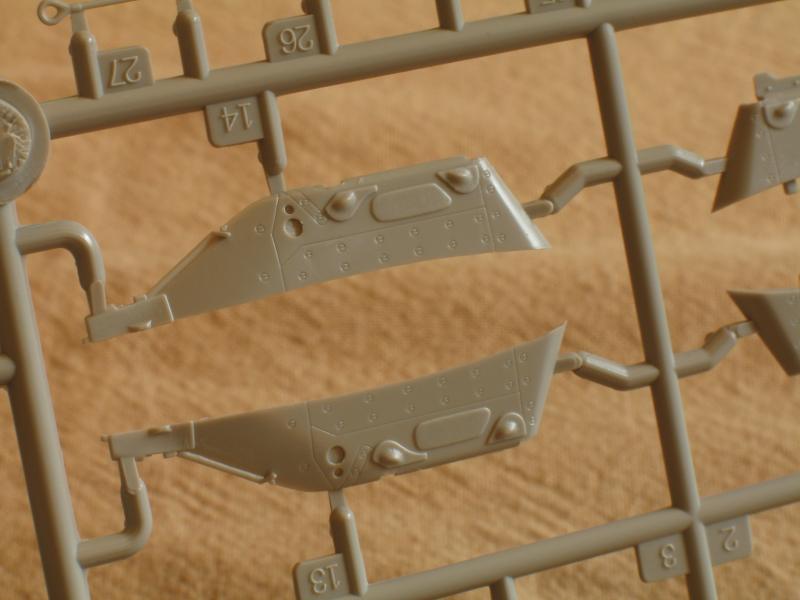
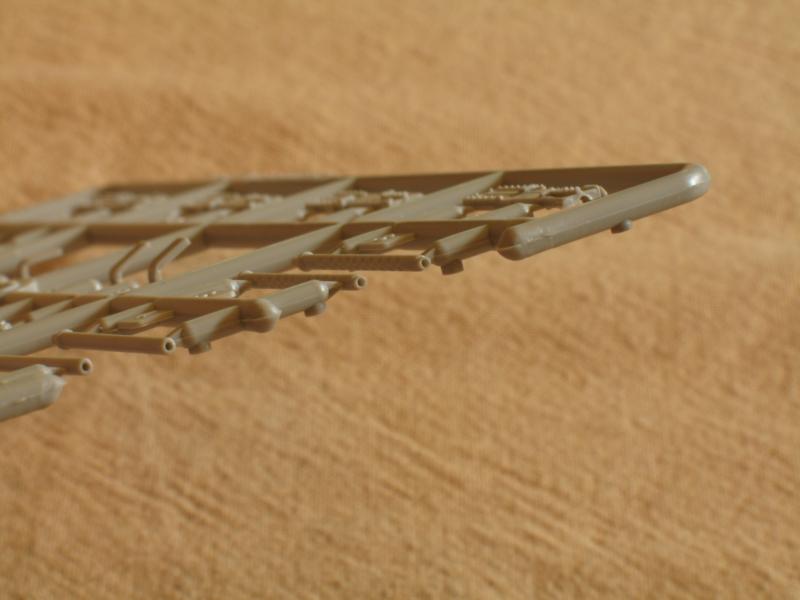

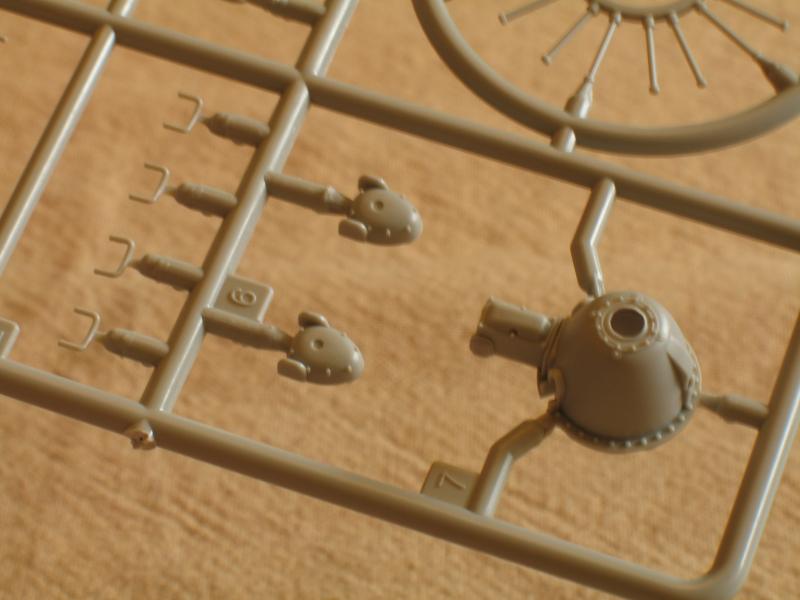
Accuracy
Stacking the kit up to scaled plans reveals good shape and dimension for the fuselage. There may be a slight thinness in the rearmost fuselage before the fin, and the turbo exit seems possibly a bit to far forward.

Decals
Decals have never been Trumpeter's specialty, and so it is with low expectations that I find this sheet to be only a bit better than some of the horrors they have provided in the past. Of special note are the fantastically printed "Donald Duck" nose art, and an unfortunate miss on the national insignia dimensions (again). While not as bad as the initial Dauntless release, these late-war insignias feature borders that are too thin. For correct dimensions new insignia will need to be sourced.
Shortfalls
Well with all it has going for it, the Trumpeter Razorback has a few flaws.
- The spine of the rear fuselage is not captured fully here. The spine should be quite sharp but the kit's spine has a much more blended crest.
- The surface detail will still be a bit much for many modelers
- The decals are only average
- The price point will be a barrier for some.
Beyond that there is not much this kit does not deliver on, indeed it features too many parts and more options than one could use even over two builds.
If a super detailed job is planned the landing gear will be the weakest link, and will have to be addressed in earnest.
After market decals will need to be sourced to bring a matching level of quality to the finish that will exist in the build details.
Conclusions
For anyone wanting to cut open a large scale Thunderbolt for a super detail job, there can be no better alternative than this kit. For those who are less interested in that and looking for a value-priced razorback...well...Hasegawa may or may not deliver given this release will take up some room on the hobby shop shelves and it is possible that this may be the only Razorback we see in 1/32 for a long time to come.
Given the subject and size I cannot see any more complete Razorback kit hitting the 1/32 market, even in the distant future. And while there may be no need to re-box this kit for decals, if it ever goes to a Hobbycraft boxing, or hits the sale bins this kit will be a super value.
The basic structure taped up obediently, sorry for the lousy lighting!
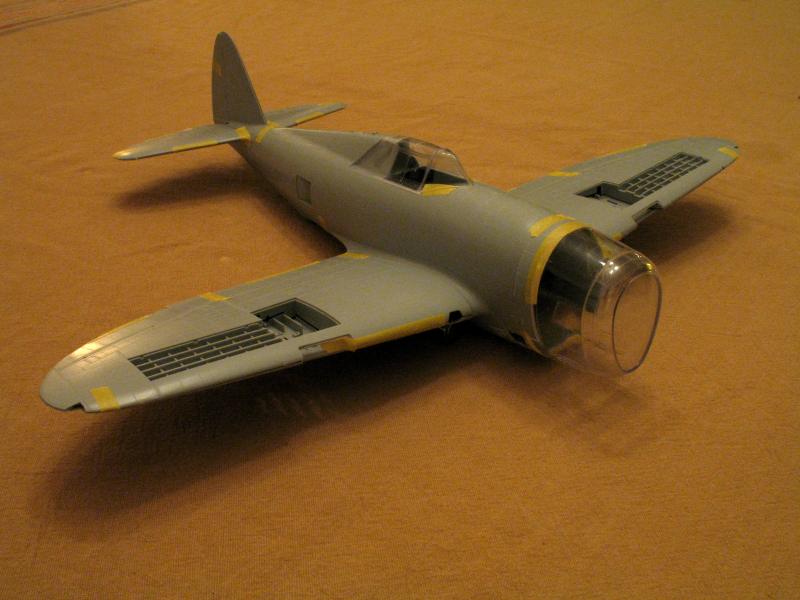
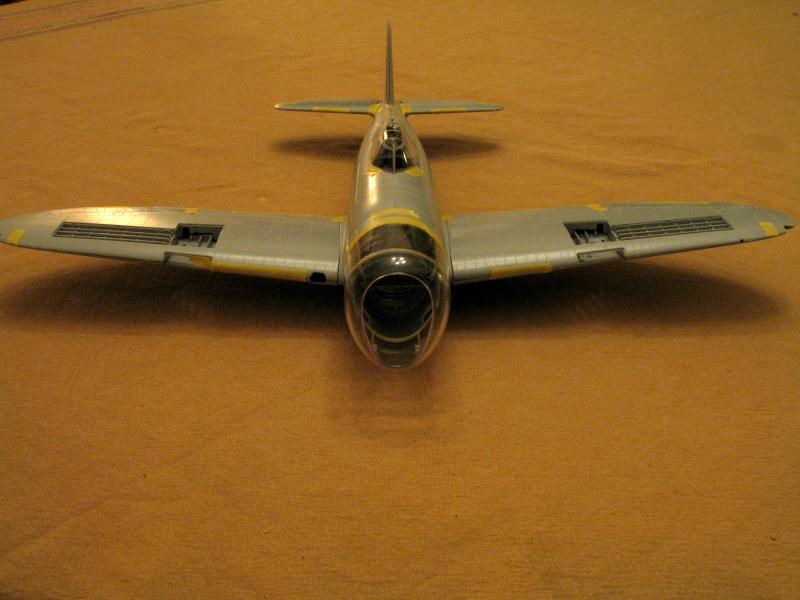
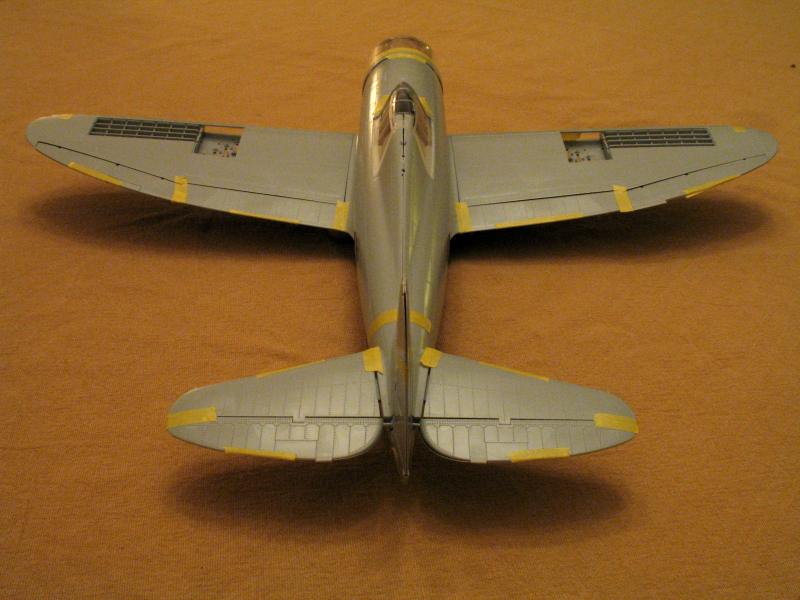
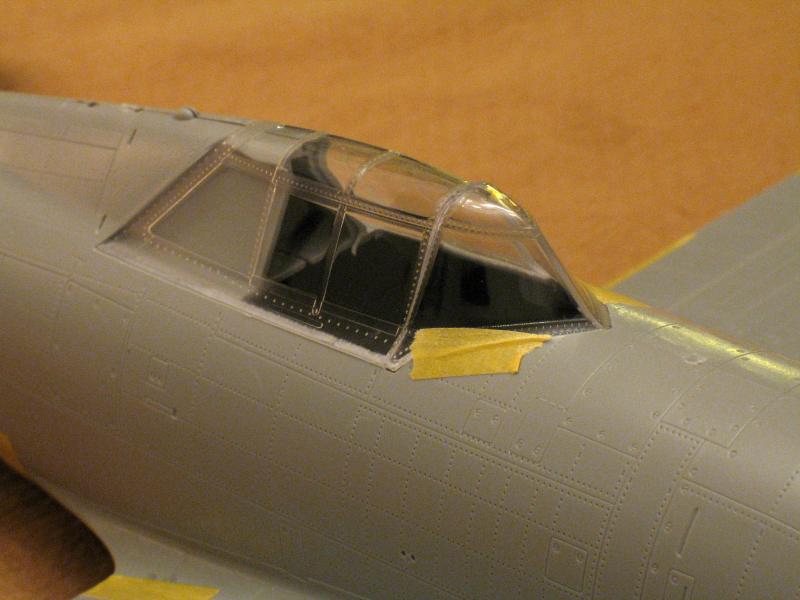
The kit is recommended.
Review sample courtesy of Stevens International.
© Chris Sherland 2007
This review was published on Saturday, July 02 2011; Last modified on Tuesday, November 07 2023
